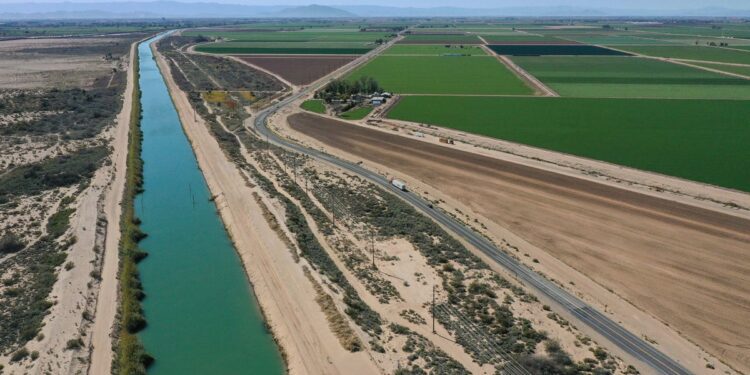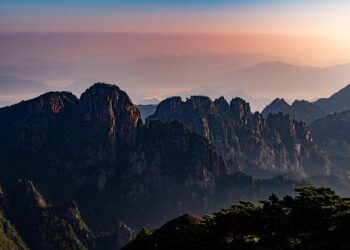Drone video of Colorado River water flowing into Palm Springs
Drone video of Colorado River water flowing into Palm Springs.
The Biden administration on Wednesday released a wide range of options for the long-term future of the Colorado River, which officials said “provides the framework for a realistic and fair path” to protect the needs of 40 million people in seven states and Mexico who rely on the overused, fast-dwindling river and its mighty reservoirs for irrigation and drinking water.
The alternatives range from doing nothing, considered a nonstarter because of mounting drought and climate change, to proposed steep requirements for northern states to contribute far more river water than they currently do to keep the aging Lake Powell reservoir and critical infrastructure functioning, and to stabilize the entire system for decades to come.
While there is not enough time left to complete required environmental reviews, none of the Biden administration officials ruled out a possible breakthrough conservation consensus among states that could possibly have funds allocated from remaining infrastructure and climate resilience funds by year’s end.
A White House climate advisor, an Interior Department official and U.S. Bureau of Reclamation Commissioner Camille Calimlim Touton, speaking in a brief call with reporters, urged the states to keep working together, and most of the alternatives noted that the federal government has the authority to impose a solution if none is reached by consensus.
That threat, raised by Touton in 2021, drove the seven states to reach agreement in exchange for billions in federal funding, including nearly $1 billion for California desert districts and farmers, to be paid to conserve major amounts of water though 2026, when “interim” guidelines expire.
“Now is the time for the Basin states and Tribes to redouble their work toward a consensus alternative,” acting Deputy Interior Secretary Laura Daniel-Davis said in the call. “The alternatives we are announcing today show that path. I urge them to do so.”
Chances of an agreement by year’s end are low
But the chances of achieving any long-term consensus by January appear lower than ever.
The Colorado River Upper Basin, comprised of Colorado, Wyoming, Utah and New Mexico, and the Lower Basin, made up of California, Arizona and Nevada, have been quarreling for months over seemingly irreconcilable differences. The northern states say they are unfairly forced to send most of their water downstream each year, and want the right to hold more back.
The heavily populated southern states and several outside experts say that defies the new reality of a shrinking river. None had much to say about Wednesday’s announcement, and some escalated an increasingly public war of words, with California’s Colorado River Commissioner, JB Hamby saying if Colorado doesn’t agree to make cuts, Denver’s water supply could could be disrupted, because of longstanding water rights that give farmers first crack over cities.
Kyle Roerink, executive director of the Great Basin Water Network, said Wednesday’s news changes little. “In reading the tea leaves, the conflict between the upper and lower basins’ respective visions remains palpable. There is a major fight over managing Lake Powell’s elevations that has not yet been resolved.”
Janet Wilson is senior environment reporter for The Desert Sun, and co-authors USA Today Climate Point, a weekly newsletter on climate, energy and the environment.
Source link : http://www.bing.com/news/apiclick.aspx?ref=FexRss&aid=&tid=673e6a7b222f40a5912eb8480a9514d9&url=https%3A%2F%2Fwww.usatoday.com%2Fstory%2Fnews%2Fnation%2F2024%2F11%2F20%2Fcolorado-river-water-crisis-update%2F76460719007%2F&c=17053834560454562653&mkt=en-us
Author :
Publish date : 2024-11-20 09:29:00
Copyright for syndicated content belongs to the linked Source.












